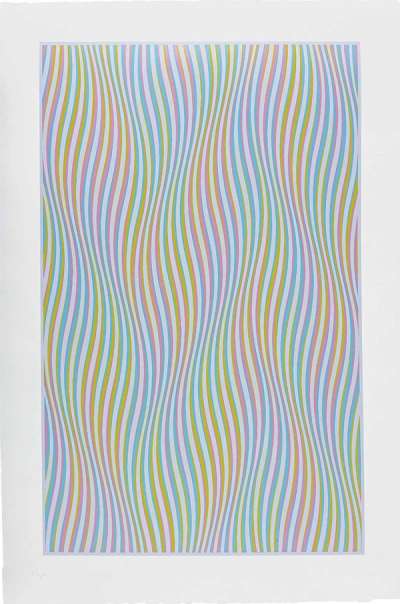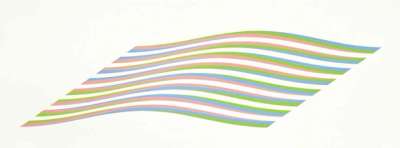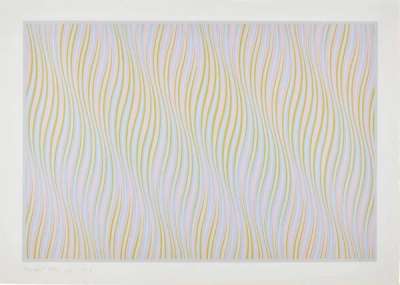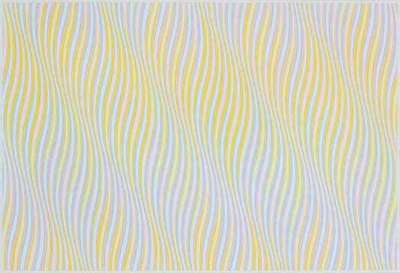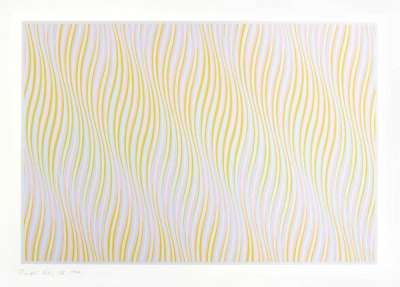
Untitled (blue)

Untitled (blue)
Signed Print
Bridget Riley
£7,000-£10,500Value Indicator
$14,000-$21,000 Value Indicator
$12,500-$19,000 Value Indicator
¥60,000-¥100,000 Value Indicator
€8,500-€12,500 Value Indicator
$70,000-$100,000 Value Indicator
¥1,320,000-¥1,980,000 Value Indicator
$9,000-$13,500 Value Indicator
AAGR (5 years) This estimate blends recent public auction records with our own private sale data and network demand.
There aren't enough data points on this work for a comprehensive result. Please speak to a specialist by making an enquiry.
Medium: Screenprint
Edition size: 75
Year: 1978
Size: H 57cm x W 84cm
Signed: Yes
Format: Signed Print
TradingFloor
Track this artwork in realtime
Watch artwork, manage valuations, track your portfolio and return against your collection
Track auction value trend
Auction Results
| Auction Date | Auction House | Location | Hammer Price | Return to Seller | Buyer Paid |
|---|---|---|---|---|---|
| April 2024 | Brunk Auctions | United States | |||
| August 2022 | Duggleby Stephenson (of York) | United Kingdom | |||
| February 2021 | Rago | United States | |||
| June 2020 | Bonhams Knightsbridge | United Kingdom | |||
| June 2020 | Sworders | United Kingdom | |||
| June 2018 | Bonhams New Bond Street | United Kingdom | |||
| July 2013 | Bonhams New Bond Street | United Kingdom |
Meaning & Analysis
Untitled (blue) (1978) by Bridget Riley was released in a signed edition of 75 screen prints. It is composed of wavy verticals in three pastel shades that, dissolving into one another, seem to generate many new hues— a prismatic illusion inspired by Pointillism’s similar composite approach to colour.
Untitled (blue) features Riley's Waves motif. Lines ripple vertically down the canvas in hues that change at alternating lengths. Despite using just three colours, they merge and bounce off each other, creating a rainbow of varying hues. Each colour choice persists for one and a half wave lengths before merging into a new colour. Whilst viewing Untitled (blue) from a distance, the different shades are perfectly separate and recognisable. Yet, from a distance, they overlap and fuse together. This impression, combined with the evocation of movement within the lines, create mesmerising optical effects, from which the term Op Art takes its name.
The individual components of the canvas are not registered by the viewer. Instead, the work is viewed as a whole ‘field’ in which the resulting visual effect is created by an awareness of all the varying parts of the painting at the same time.
Bridget Riley, a leading figure in the British Op-Art movement, has captivated audiences with her abstract paintings and prints that challenge visual perception. Born in London, 1931, Riley’s artistic journey evolved from semi-Impressionist beginnings to geometric mastery, significantly influencing modern art. Her groundbreaking artworks, from Movement In Squares to the vibrant Stripes series, explore optical phenomena and colour dynamics, creating mesmerising, dizzying effects. With a prolific career spanning over seven decades, Riley’s innovative designs and perceptual disruptions continue to shape contemporary British art, solidifying her enduring influence in the realm of abstract and modern art.
